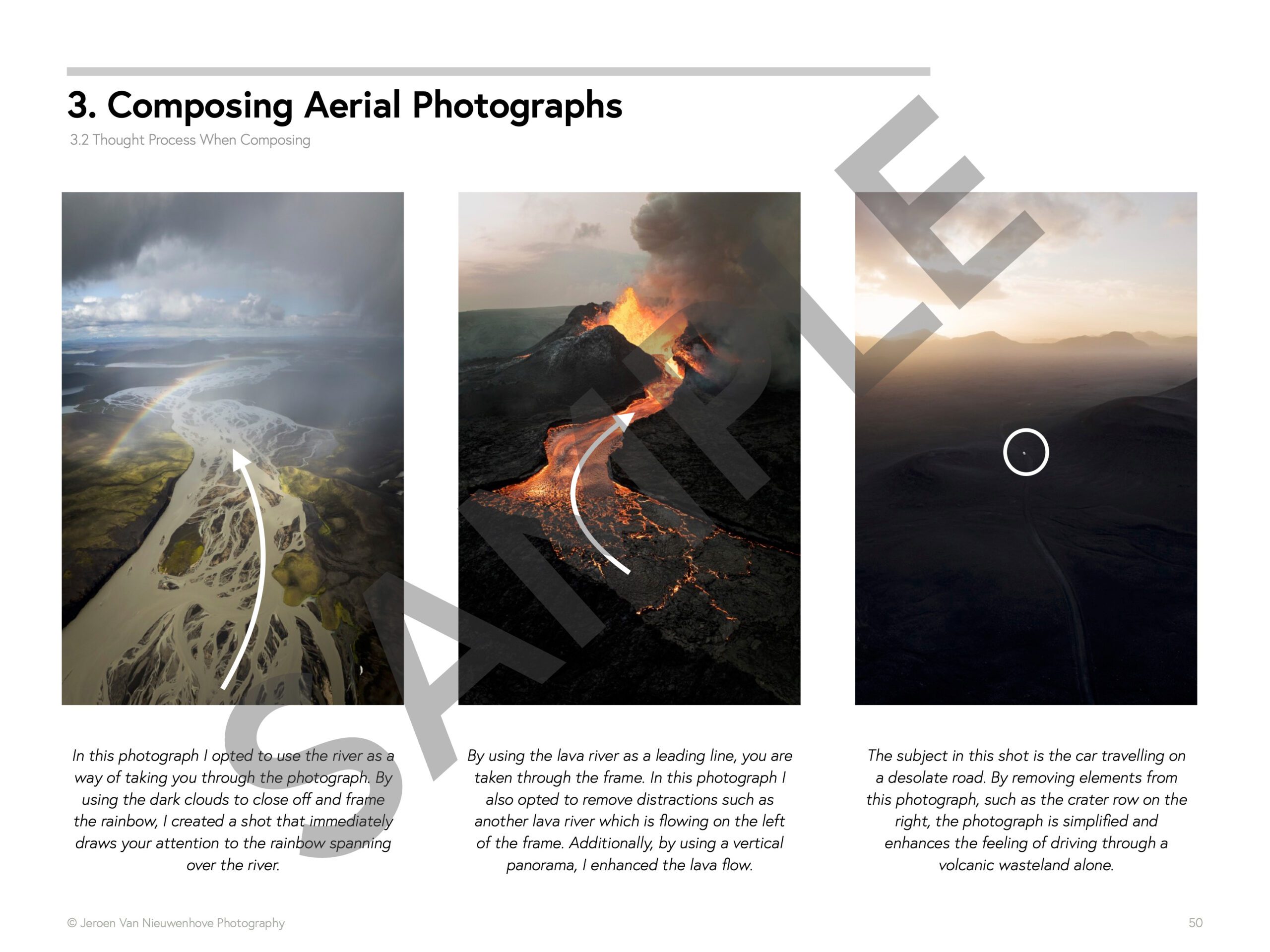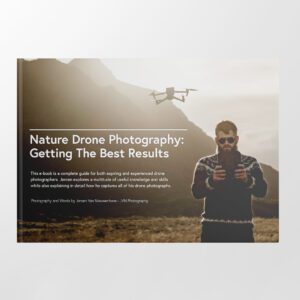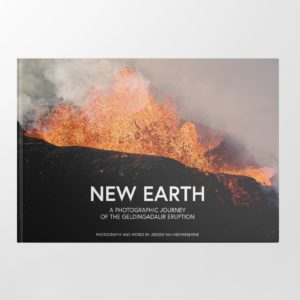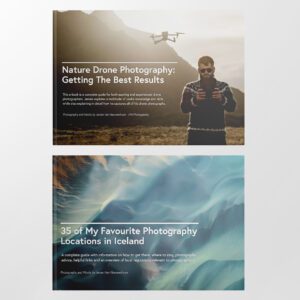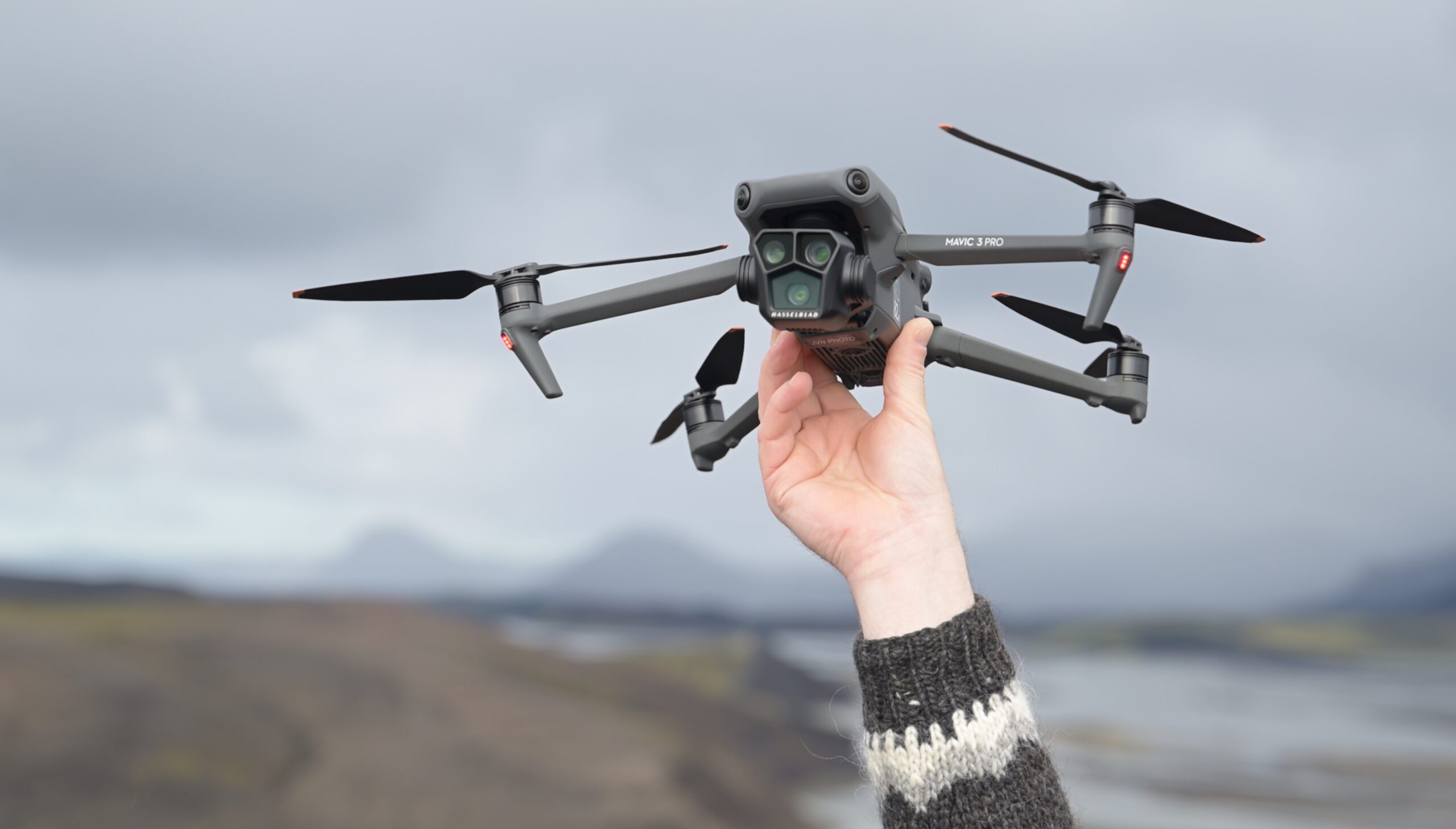While last year it seemed DJI was releasing a new drone every other month, presumably to get them all class-certified by January 1st 2024, this year has been fairly quiet when it comes to new drone announcements. Aside from the DJI Avata 2 and the DJI Neo, which are both video focused, no other significant new drones were released. This has left us drone & aerial photographers hungry for more. However, today that all changes with the release of the brand-new DJI Air 3S. So what’s new in this latest DJI drone? And is it a worthwhile upgrade from its predecessor for drone photography? Let’s find out!
Disclaimer: This article is not sponsored in any way. However, when you make a purchase using the link in this article, I may earn a small commission. All opinions in this article are my own. If you (dis)agree, I invite you to open a discussion in the comment section.

© DJI – The new DJI Air 3S was announced today.

© DJI – The official teaser image of the DJI Air 3S announcement, which teases great low light performance as well as the improved double camera system.
Rewind: What Were My Impressions Of The DJI Air 3?
Before we can dive into what improvements the DJI Air 3S brings, I want to rewind and talk about its predecessor, the DJI Air 3. For the last year and a half, the DJI Air 3 has been my recommendation for anyone looking to spend a little more to get a better drone than an entry level model such as the DJI Mini 3 Pro & DJI Mini 4 Pro. The reason for that is that it offers several worthwhile improvements over the DJI Air 2s, such as:
- The extended battery life compared to cheaper drones is noticeable and useful. It will allow you to feel less stressed while also increasing the number of photographs you can take during your flights.
- Having an additional focal length (70mm) increases the number of perspectives you get when photographing.
- The wind resistance is excellent in even strong winds.
- The Ocusync 4 transmission provides better range and smoother transmissions.
- The DJI RC2 remote controller, which comes with the drone, has external antennas which improves the transmission stability. Thanks to improved internals, this remote also feels considerably snappier than the original DJI RC that works with the DJI Air 2s.
However, all was not perfect with the DJI Air 3 and I found there to be a few shortcomings. In my initial thoughts, I pointed out a few things DJI could improve upon a future iteration, such as:
- The image sensor of the main camera is considerably less resolution and is smaller than its predecessor, the DJI Air 2s. This means that as a result, you will get less qualitative images with less resolution by comparison. It also made single shots quite useless as 12 megapixels taken with a small sensor is not something most photographers would be happy with.
- Taking bracketed shots can take much longer than on more expensive drones due to slower processing.
- The increased weight compared to its predecessor makes this less of an “air” model.
- The battery charging dock is large and feels unnecessarily bulky.
I tested the DJI Air 3 for several weeks in the summer of 2023 as I damaged my main drone. The results I got from it, using the panorama technique, were really good.
Even the 3x telephoto lens on the DJI Air 3 has proven to be incredibly useful in drone photography.
What Are DJI Air 3S’ Most Notable Improvements Over Its Predecessor?
While not all the shortcomings I found have been addressed, the DJI Air 3S does have several key improvements over its predecessor. The major improvements in this drone can be found in the camera system and obstacle avoidance sensors.
1. DJI Air 3S’ New & Improved Dual Camera System
The DJI Air 3S‘ most important improvements over its predecessor can fortunately be found in the imaging department as this newest iteration has a dramatically improved main and telephoto camera.
The new 1x main camera (24mm equivalent), which I suspect most photographers use 99% of the time, comes with a new 12 megapixel 1 inch CMOS sensor, which can also take 50 megapixel images thanks to it’s quad-bayer configuration. It has a fixed aperture of F/1.8. The main camera boasts an impressive 14 stops of dynamic range, which should offer a lot of improvements in high-contrast scenes. On top of that, DJI promises a dramatic improvement in low light imaging with the DJI Air 3s as the main camera now supports up to 12800 ISO, which outperforms even the DJI Mavic 3 Pro.
The new 3x telephoto camera (70mm equivalent) comes with a similar 12 megapixel 1/1.3 inch CMOS sensor, which can take up to 48 megapixel images thanks to the same quad-bayer configuration. It has a fixed aperture of F/2.8.
Without actually having had the chance to test a DJI Air 3S, these improvements are more in line with what I had hoped the DJI Air 3 to be when it released. The DJI Air 3 was already a pretty decent drone for photography, especially if you create aerial photographs using the panorama technique, so any improvements to the imaging sensors will certainly take this to a new level.
2. Improved Obstacle Avoidance Sensors
The DJI Air 3S comes with a brand-new obstacle avoidance system, which is called the Nightscape Omnidirectional Obstacle Sensing system. This new technology is powered by LiDAR and infra-red, providing a big jump forward in drone operability in lower light situations. The new system uses forward-facing LiDAR sensors, downward-facing vision sensors, lateral vision sensors and, finally, infra-red sensors that face upwards. All of these new sensors are powered by APAS 5.0 and will allow the DJI Air 3S, for example, to sense obstacles forward-facing up to 25 metres away at night. This opens up the door to a much improved automated Return-To-Home too.
Why is this useful for aerial & drone photography? These improvements to the obstacle avoidance sensors will allow the DJI Air 3S to truly be perfect tool in low-light conditions such as during blue hour or even in complete darkness, which I have personally flown a lot in with my DJI Mavic 3 Pro in, for example, at the volcanic eruptions in Iceland.
3. Improved Video Performance For Low-Light Conditions
As you would expect, the video performance has also received an upgrade on the DJI Air 3S.
- The ISO range has been improved, which will help in low-light conditions. You can now configure the ISO between 100-12,800 (with the Normal colour profile), 100-3,200 (with the D-Log M colour profile) and 100-3,200 (with the HLG colour profile).
- The video resolution and frame rate has also been improved as the DJI Air 3S now supports up to 4K resolution at 120fps and 1080p at 240fps.
- It is also still possible to create a vertical crop for social media, which will give you a 2.7K image, with a maximum frame rate of 60fps.
These specifications indicate that the DJI Air 3S should be capable of producing quality video footage in even low-light conditions.
4. Small Improvements & Tidbits On The DJI Air 3S
There are a few smaller improvements and features that are important to note about the DJI Air 3S but are too small to expand on in detail. However, I did think it was valuable to mention them here.
- The DJI Air 3S, with battery, weighs 724g, which is only 4 grams heavier than its predecessor. It’s again not that light but the good news is that it still a C1 drone. In Europe, this means you don’t need the A2 license to fly it but can just fly it in the A1/A3 Open category.
- The top speed in Sport Mode is 21m/s (27m/s with tailwind), which is comparable to the DJI Mavic 3 Pro.
- The drone comes with the improved DJI RC-N3 or DJI RC2 remote controllers – depending on the package you go for. It uses the much improved OcuSync 4 transmission technology, which has a theoretical range of 20 kilometres. This still DJI’s most current transmission technology to date.
- The DJI Air 3S supports 7-shot brackets, which is up from 5 on all other DJI drones. It is possible this software feature makes it way to other drones too.
- There is now 42GB of internal storage, which gives you a nice backup storage if you run out of SD card space.
- The batteries that come with the DJI Air 3S are slightly larger in capacity but the DJI Air 3 batteries are also compatible with the Air 3S. This is good news for people who upgrade from the previous model.
- The battery charging dock that comes with the Fly More combo is still enormous, which I think is a missed opportunity. As a person who likes to have his gear as compact as possible, this charging dock seems unnecessarily large.
What About ‘Free Panorama Mode’?
Along with the DJI Air 3S a new ‘Free Panorama Mode‘ software feature was released. This new feature allows you to select a specific area the drone should make a panoramic image of. Using AR, it will then show you which area the drone will be capturing within your panorama.
While this sounds very interesting at first glance, this more-advanced Panorama mode is still limited like the original Panorama modes on other drones. This means that for serious aerial photographers, panoramas are still best done manually. Just to name a few advantages when doing panorama’s manually: you retain control over the amount of images taken, you can bracket, you control the amount of overlap between images, and much more. You will also be able to take images much quicker, which can be vital in windy or fast-moving situations. If you wish to learn how I create my drone panoramic images, make sure to have a look at my drone photography e-book.
Is The DJI Air 3S The Best New Mid-Range Photography Drone?
Without having tried the DJI Air 3S, what are my thoughts? It is very clear that the improvements in the imaging department are really promising and a definite improvement over the previous model. The improved low-light performance, together with the bigger main camera sensor, make it clear to me that the DJI Air 3S, the successor to the DJI Air 3, is the mid-range drone to recommend for 2024 & 2025. Is it the best prosumer photography drone on the market today? No, that honour is still for the DJI Mavic 3 Pro but seeing the improvements on the DJI Air 3S does get me excited to see what DJI has in store for us for the DJI Mavic 4 Pro.
If you are curious what other drones I would recommend for photography, make sure to check out my dedicated blog about which drone to buy for photography!
PS: Here’s a little tip… Even if you are not convinced by the improvements on the DJI Air 3S, the DJI Air 3 is still an incredible drone for photography. You may even be able to get it at a nice discount in the upcoming discount days.
DISCOUNT
The Drone Photography Masterclass
Nigel Danson & Jeroen Van Nieuwenhove‘s complete drone masterclass will explore everything you need to know to start creating the best aerial photographs using any type of drone in 50+ detailed videos. Whether you are a complete beginner or an advanced drone pilot, this video course contains a vast amount of information to level up your drone photography skills.
Learn Drone Photography With My E-Book
Want to learn how to get the best results with your newly purchased drone? I wrote the most comprehensive guide available on drone photography which teaches you a technique to get the DSLR-like results out of even the cheapest drones.
In 125 detailed pages I explore everything you need to know to start creating the best photographs using any type of drone. Whether you are a complete beginner or an advanced drone pilot, this e-book contains a vast amount of information to level up your drone photography skills.
What to Expect?
- A 125-page educational PDF about nature drone photography with very detailed explanations
- Which drone to get for photography and why
- Important settings and configuration options
- A list of useful skills & tips
- A list of useful accessories and what not to buy at all
- How to research locations for drone photography
- How to compose with a drone and insight into Jeroen’s thought process with plenty of examples
- Thoughtfully planning ahead for your drone shoot
- The how and why of creating bracketed images
- The how and why of shooting HDR panoramas
- What challenges you might face and how to deal with them
- Common mistakes & how to deal with them
- How to stitch your panoramas together
Use EBOOK20 to get 20% off your Nature Drone Photography (E-Book) purchase!
Support Jeroen’s Work
As an independent photographer, Jeroen partially relies on your support to keep producing worthwhile content such as blogs, photographs, books and much more. If you want to support his work, it is possible to do so by buying his e-books & books, prints or calendars.
You can also sign up to the newsletter to stay up to date on new blog posts, projects, workshops and other interesting information.
Thank you for considering!













